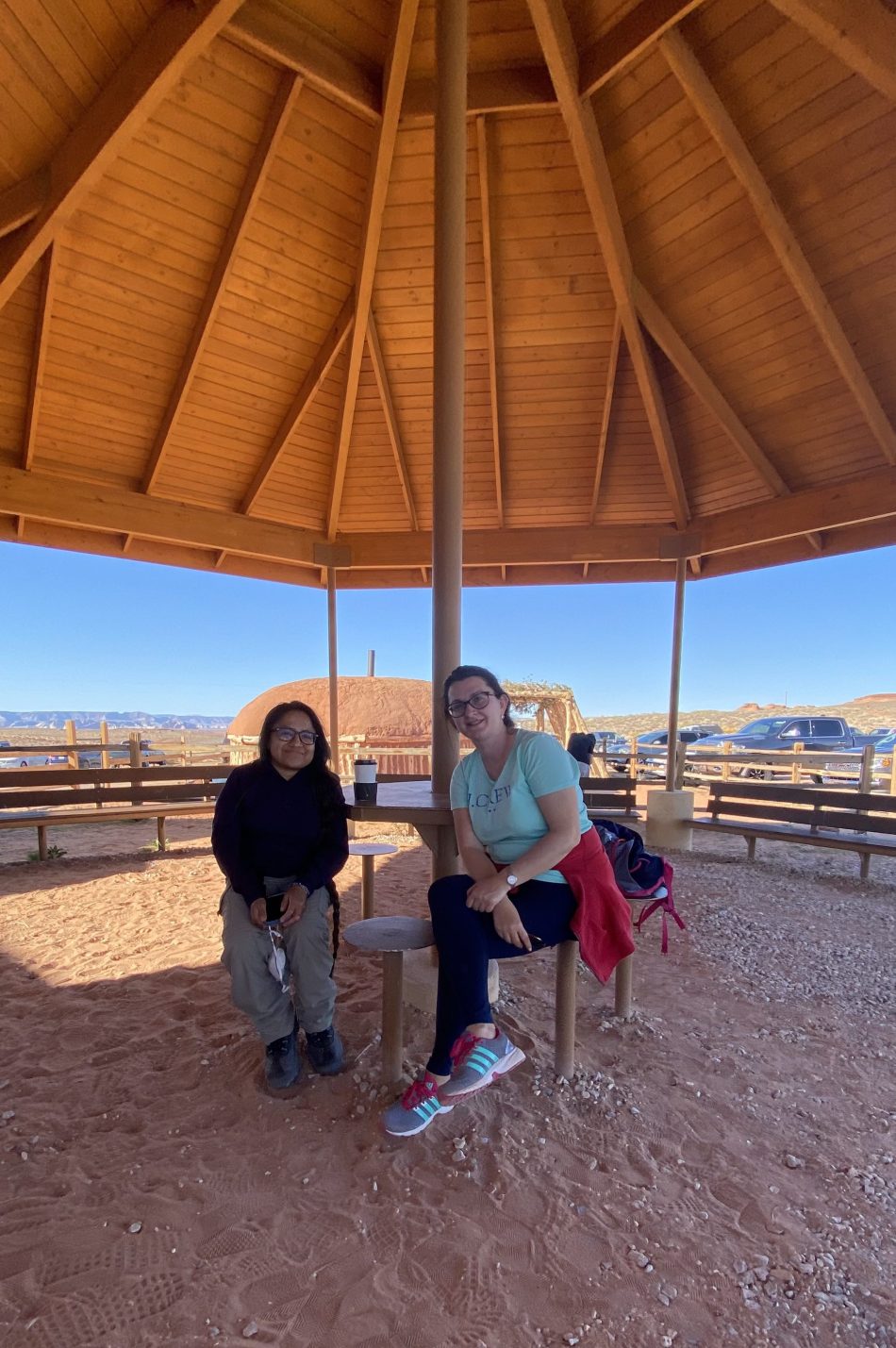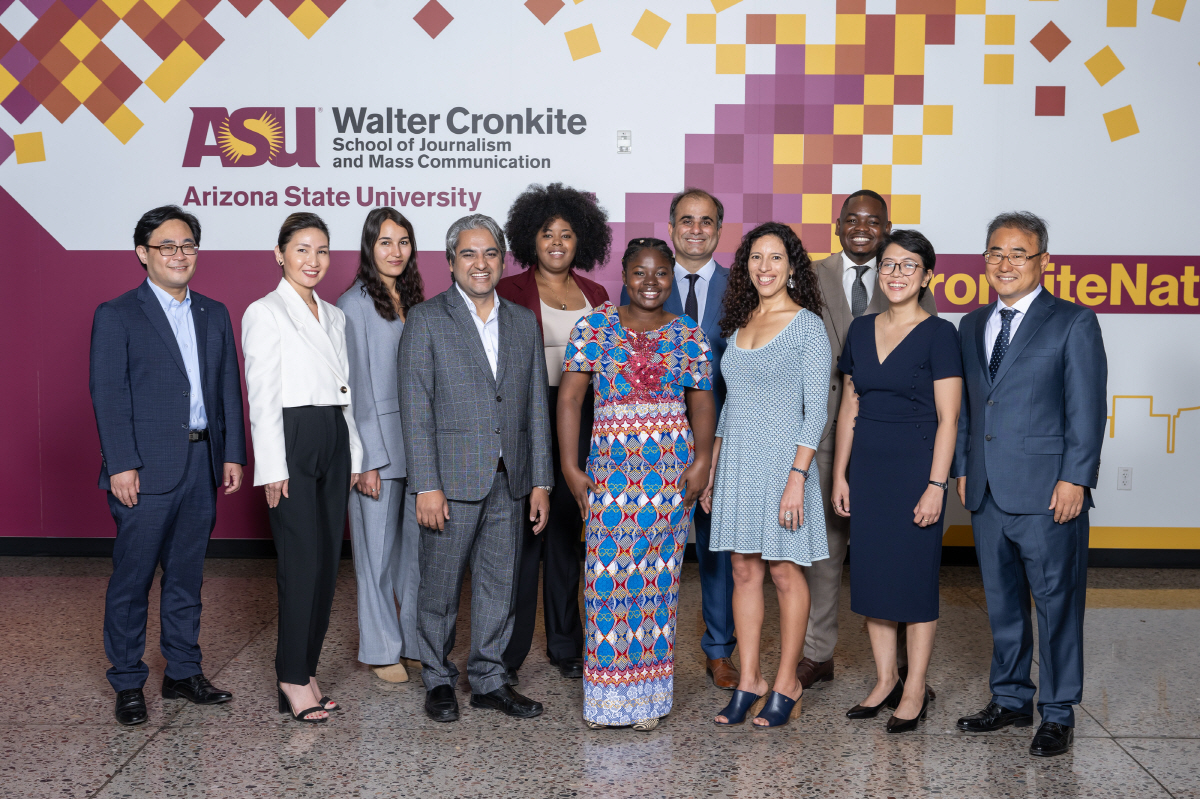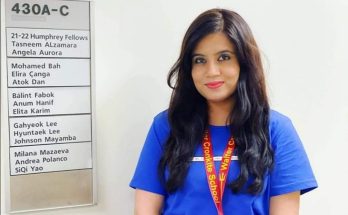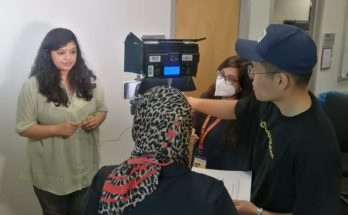My first “introduction” to Arizona was the famous movie by
Emir Kusturica back in the ’90s –
“Arizona
Dream”, a surrealist comedy drama starring Johnny Depp and
Faye Dunaway.
Its first image of a cactus and a fish
forever imprinted a picture on my mind of Arizona as a
very
faraway and strange place. At that time, I never
would have thought that someday I would be
living here
and this new world of cactuses and fish – reality and dreams
– would open me up in
the most amazing ways.
Scratching beyond the surface, you’ll find more and more
hidden
wonders in The Grand Canyon State.
I was just thinking about how to explore this land with all
its opportunities and places to visit
while we were
starting a trip to Northern Arizona and the borderline with
Utah. Life in Phoenix
and within the Humphrey program
comes with a certain crazy rhythm, and it is not that easy
to
plan and travel everywhere. Sometimes you stop at
some borders for different reasons, while
other times
you have the need and desire to explore these borders and
find out what’s behind
them. Page is just over four
hours away from Phoenix, yet it is so different. It is home
to the
Navajo Nation and the most amazing natural
canyon called Antelope, as well as the stunning
Horseshoe
Bend.

I had arranged a meeting with Krista Allen, journalist
and editor at “The Navajo Times,” which to my
surprise, still continues the unique ritual of being sent to
print in these days and times. Krista was working intensely
during those two days. The newspaper, which has only a
limited number of reporters, is the voice of the Navajo
Nation. It covers mainly issues in this community – a
nation on its own, with its own governing structure, police,
rules and even its time zone. Strangely enough, time goes
forward or backward whenever you enter or exit Page. I never
got used to it.
I was supposed to meet Krista over lunch to talk about
common things in our profession had
she not written to
me suddenly, asking, “Have you done Antelope yet?”
I had not. Tickets for Antelope are sold weeks and months in advance, and it almost broke my heart thinking I wouldn’t get the chance to see this wonderful canyon. I had seen it before but in photos only, which, to me, looked surreal.
“I will get us a tour there,” she says. And there I was the
next day, waiting for her at the
entrance to the
canyon. The groups were very small, maximum 6 persons, and
we had to be
masked at all times. I learned that the
COVID-19 pandemic hit the Navajo Nation hard. Ninety
percent
of the people got Covid and there were many victims. Our
guide lost his grandmother
and grandfather. He was very
strict. “Keep the mask on or it will be a pity to cut this
tour short,”
he insisted. One hundred steps to go down
in a wonder canyon, all in red stone, in unimaginable shapes
beautifully placed by nature, and above you just see the
blue sky in a contrast with ten different shades of red.
National Geographic, many other magazines and newspapers
have documented this wonder. But I always thought the photos
had been filtered or re-touched. That day I found out that
there’s no need to do that. One hour in this beautiful
setting is not enough. I saw groups arriving after us – the
day simply cannot accommodate all the visitors from around
the world who want to see the canyon. It takes around one
hundred steps to come out of this impressive scenery–one
which I will never forget.

Krista invited us for a rafting trip on the Colorado River
and I guess this will be another unforgettable experience.
“Journalists come from different states and media outlets to
write about our community, to
cover their stories,”
Krista said in a very quiet voice. “I feel many of them do
not quite get it, do
not get the story right, simply
because reading about Navajo Nation and living in it every
day is
not the same thing.” She went on to explain to
me that the main problem they experience is
water-related.
Added to that, the power generator was demolished a few
months ago because
the lease was not paid on time.
Education, opportunities, the health system, and well-being
are
other challenges that Krista and her colleagues
report on every day. Through the newspaper,
they want
to elevate the distinct voice of the Navajo Nation.
It’s a community that is home to the most beautiful
hidden treasures in Arizona that deserve to be shown to the
world.




